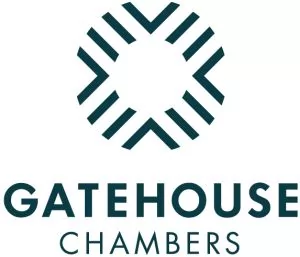Victus Estates (2) Ltd and others v Munroe; Benjamin v Victus Estates (1) Ltd and another [2021] EWHC 2411 (Ch)
Introduction
What is the legal position where A and B jointly own a property; B forges A's signature on the transfer to C who is aware of the forgery; and C charges the property to D? Is the defence of illegality available? We all know that where B forges A's signature and C is innocent, although the transfer is ineffective to pass the legal interest in the property, the effect of s.63 of the Law of Property Act 1925 ('LPA 1925') is that B's equitable interest in the property passes to C in any event: see Ahmed v Kendrick (1987) 56 P & CR 120. The consequence of this is that although D's legal charge is likewise ineffective, D has the benefit of an equitable charge over B's former equitable interest which has passed to C.
The issue under consideration in Victus is whether the answer is different if C is involved in the fraud.
Facts
The case involved two properties owned by a Mr Charles jointly and beneficially with Ms Munroe and Ms Benjamin ('the Co-owners') respectively. Mr Charles was made bankrupt. Mr Charles and a Mr Agrawal designed a scheme to annul the bankruptcy which involved the sale of the 2 properties to companies owned and controlled by Mr Agrawal ('V2' and 'V1' respectively). The county court judge held that Mr
Agrawal knew that the Co-owners did not consent to the sale and their signatures were forged on the conveyancing documents. The arrangement between Mr Charles and Mr Agrawal was a mortgage fraud, and it was a necessary part of the scheme that the Co-owners' equity would be taken from them. Both properties were then charged to the banks ('the Banks'). It was common ground that the TR1 in relation to both properties did not transfer legal title because in each case one of the co-owners had not signed it: her signature had been forged.
The Banks argued that, applying Ahmed v Kendrick (1987) 56 P & CR 120, the effect of s.63 LPA 1925 was that Mr Charles' beneficial interest passed to V1/V2 in any event and thus although the legal charges were of no effect, the Banks each had an equitable charge over V1/V2's half share. The county court judge found, following Penn v Bristol and West Building Society [1995] 2 FLR 938, that the beneficial interest did not pass because the transfer was a sham. In the alternative, he gave his own reasoning reaching the same conclusion on different grounds, including consideration of what he described as a 'Patel v Mirza analysis'.
The Banks appealed the finding that Mr Charles' beneficial interest did not pass to V1/V2.
Decision
Morgan J allowed the appeal. By virtue of s.63 of the LPA 1925, the legal charge would be effective as a charge over V1/V2's equitable interest in each property. Although the case involved a fraudulent transfer, the TR1s were in a form which satisfied the definition of "conveyance" in section 205 of the LPA 1925 and thus s.63 applied. Ahmed v Kendrick followed.
The judge rejected the county court judge's reasons for finding that the equitable interest did not pass.
Firstly, if Penn was authority for the legal proposition that because both the husband and purchaser in that case were parties to the fraudulent conveyance (where the husband had forged his wife's signature on that document to the knowledge of the purchaser) which itself was a fraud on a third party, namely the building society lending to the purchaser, no rights could pass under that document, then this proposition was rejected. Grondona v Stoffel & Co [2021] 540 makes it clear that a fraudulent transaction will not necessarily be a sham. The actual legal effect of s.63 was to transfer Mr Charles' equitable interest in each property to V1/V2. Even if V1/V2 and Mr Charles intended to pass the TR1 off as having a wider effect than that, it did not produce the result that the TR1s were to be regarded as shams in their entirety and therefore void.
Secondly, from Patel v Mirza [2017] AC 467, Grondona and the discussion in Tinsley v Milligan [1994] 1 AC 340 on this issue, it is clear that property rights, including equitable property rights, can pass under an illegal contract even if that contract would not be specifically enforced. In order to decide what should be the outcome of the fraud in this case (that is, whether Mr Charles's beneficial interest in each property did pass to V1/V2 or not and thus whether those interests were charged to the Banks) it was necessary to apply the legal principles laid down in Patel v Mirza and Grondona.
Applying those principles, the judge noted that the illegality was that Mr Charles, to the knowledge of V1/V2, committed the criminal offence of forgery of the signatures of the Co-owners. The intended victims of that illegality were the Banks and the Co-owners. In so far as the fraud was intended to deprive the Co-owners of their interest, the fraud had not succeeded. Thus, allowing Mr Charles and those claiming under him to succeed would benefit the fraudster (Mr Charles) and harm the victims (the Banks). The judge considered that the fact that in order to protect the Banks from the consequences of the fraud, a benefit was incidentally conferred on V1/V2 who were also fraudsters, did not alter the position.
Comment
The case confirms that if it is possible to show that the TR1 is a sham within the meaning of Snook v London & West Riding Investments Ltd [1967] 2 QB 786 then given the TR1 will be a nullity, B's equitable interest will not pass under s.63 as there is no "conveyance" to which the section could apply.
It will be a matter of future debate as to whether the judge's reasoning, that the TR1s were not to be regarded as shams in their entirety even if V1/V2 and Mr Charles intended to pass them off as having a wider effect than they actually did, is right.
The case also demonstrates that, more often than not, the fact that a mortgage fraud has been committed is not considered sufficient to raise the illegality defence, even where, as in this case, the fraud is both blatant and substantial. Indeed, in this case although the judge referred to the relevant principles, and purported to apply them, he did not analyse the case as the Supreme Court has suggested, instead focusing on the fact that if the defence had succeeded the Banks, who were innocent victims, would have been left without an equitable charge to enforce.
The content of this article is intended to provide a general guide to the subject matter. Specialist advice should be sought about your specific circumstances.


